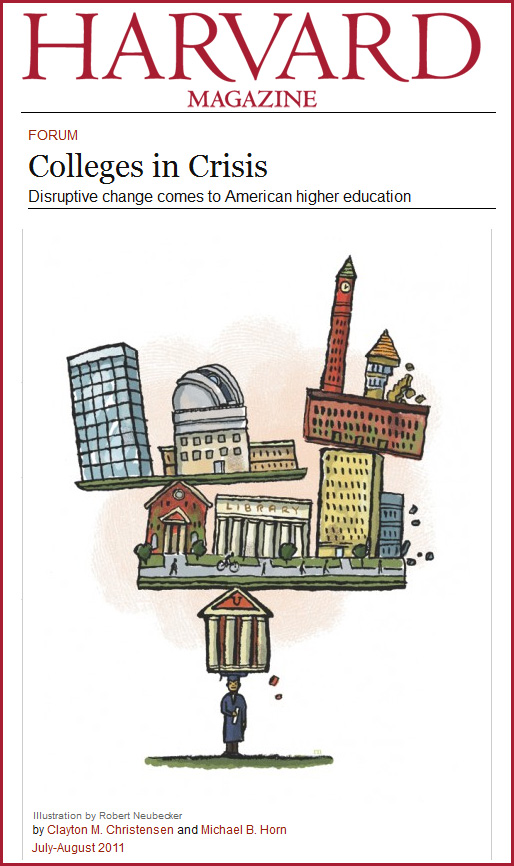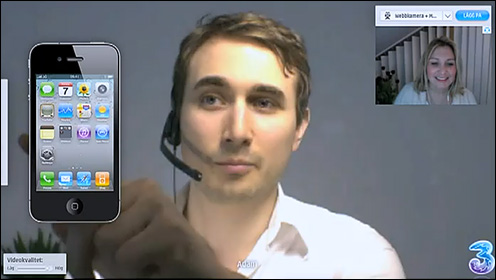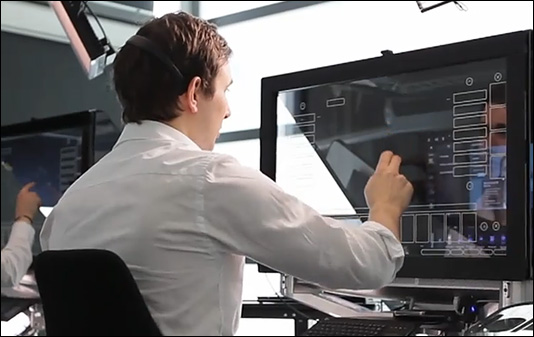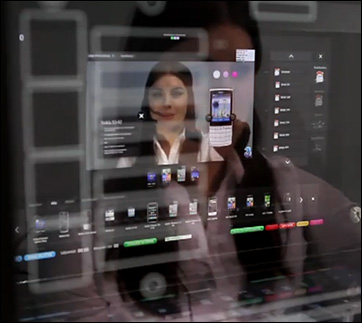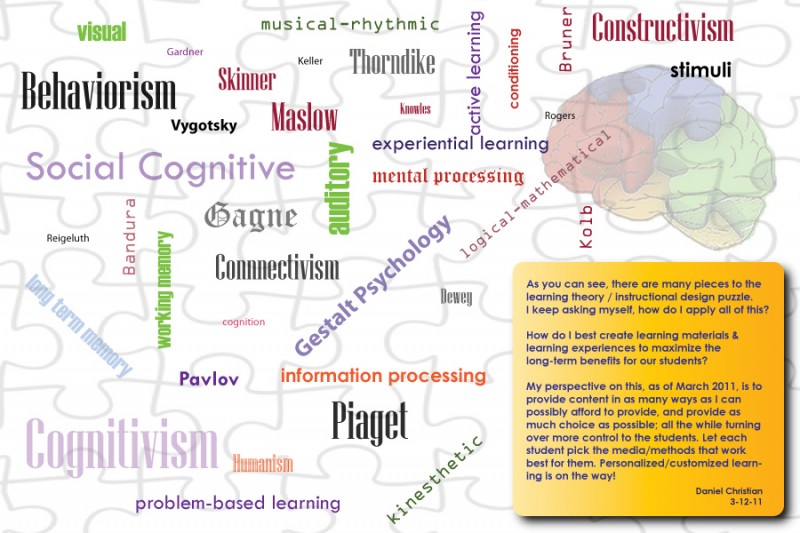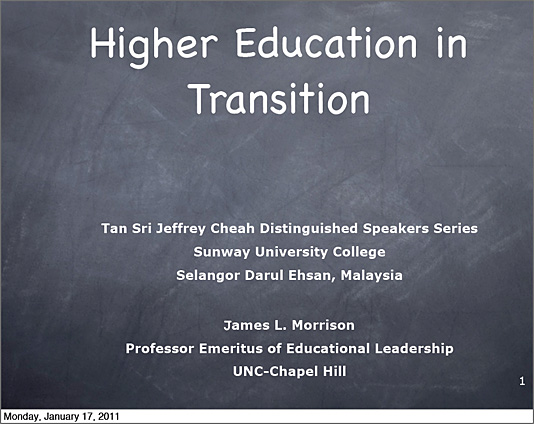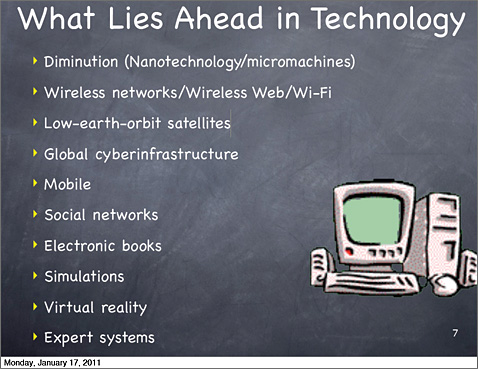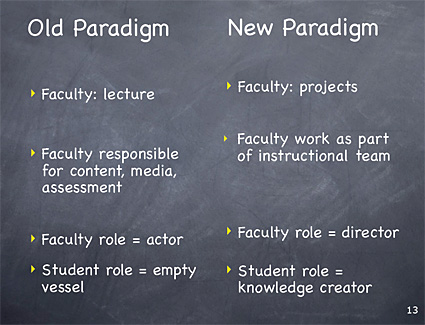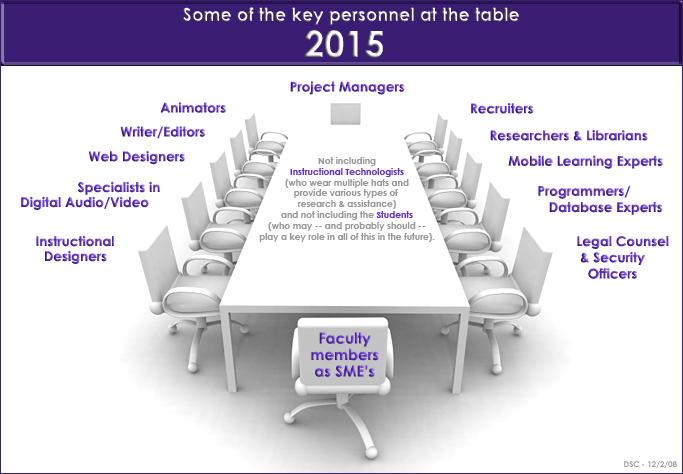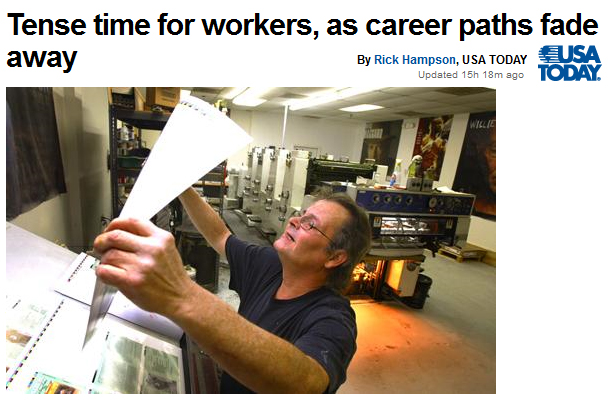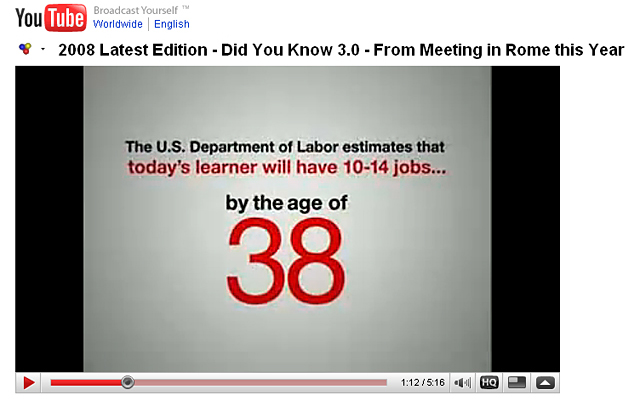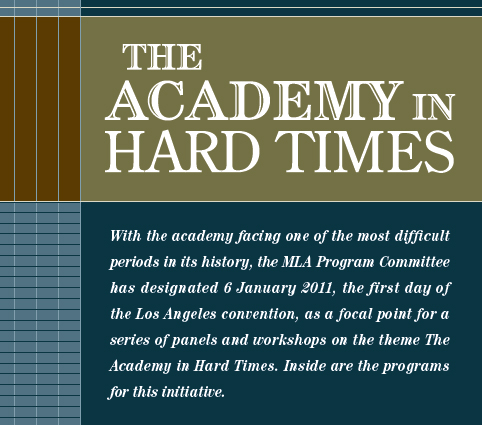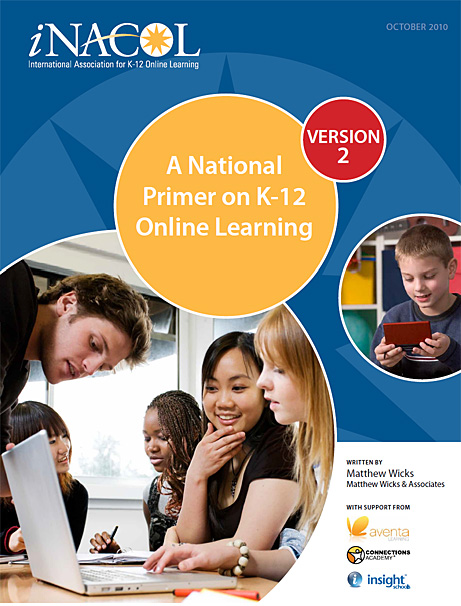Excerpt (emphasis DSC):
Clayton Christensen and Henry Eyring, building on Christensen’s contribution to business, health care and K-12 education, apply Christensen’s model of disruptive innovation to higher education. Unlike the many doom-and-gloom books of recent years, this work offers a hopeful analysis of the university and its traditions and how it must find new models for the future.
“The Innovative University” builds upon the theory of “disruptive innovation” and applies it to the world of higher education. The concept, originally introduced by Christensen in his best-selling book “The Innovator’s Dilemma,” holds that sustaining institutions or models exist, until change “disrupts” the traditional or “sustaining” model. In the case of higher education, the disruptor to the traditional university might be a recession, the rise of for-profit schools or the prevalence of high-quality online programs. The authors suggest that to avoid the pitfalls of disruption and turn the scenario into a positive and productive one, universities must change their institutional “DNA.”
…

“The Innovative University” shows how online technology makes a college or university vastly more attractive to a wide subset of students. It gives many people a second chance at learning – i.e. those who cannot afford a traditional college education, those who do not have the flexibility to take part in a full plate of coursework, and late bloomers or dropouts who have fallen behind and now have the chance to catch up.
Originally saw this at Biz Dean’s Talk










